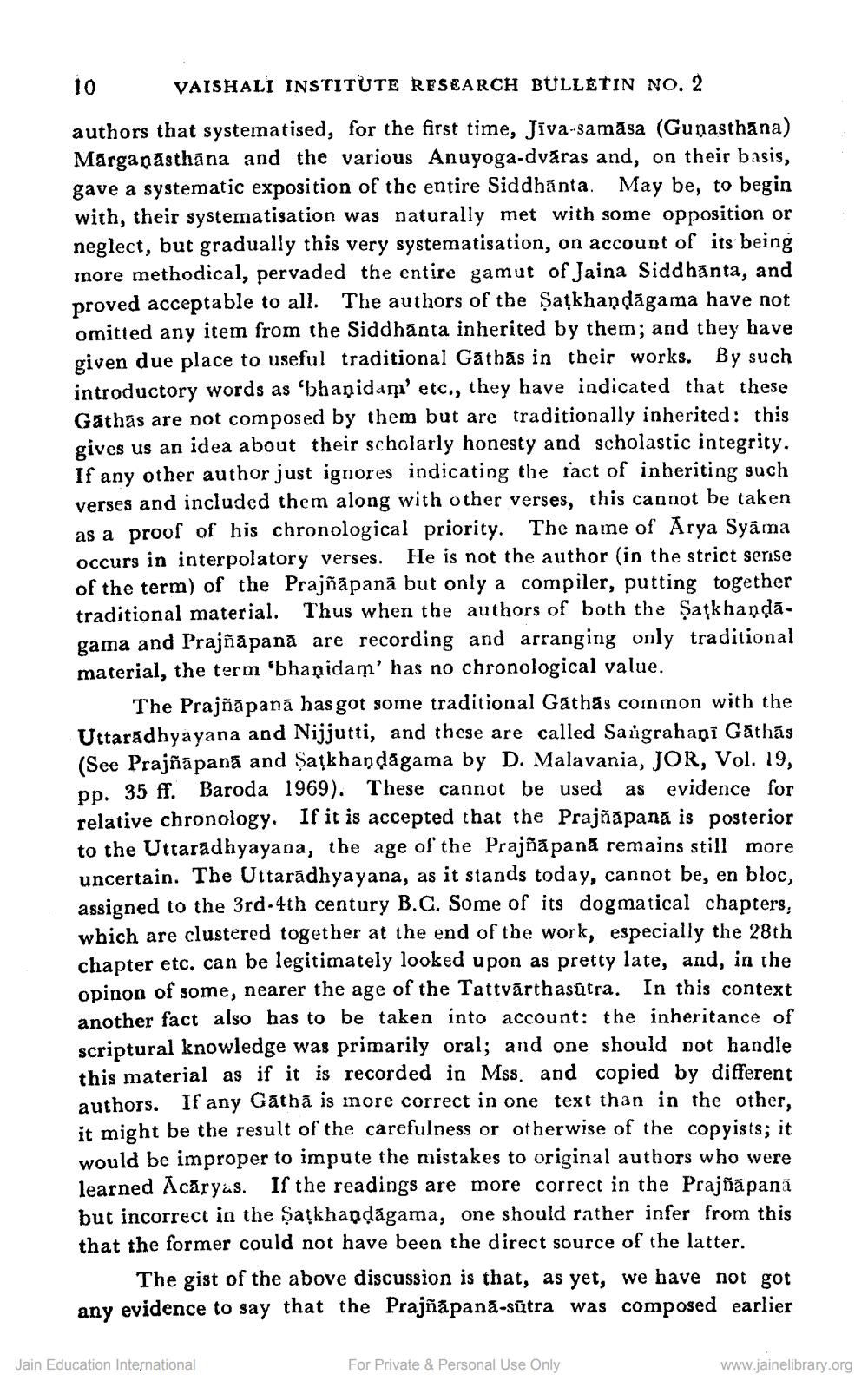________________
VAISHALI INSTITUTE RESEARCH BULLETIN NO. 2
authors that systematised, for the first time, Jiva-samāsa (Guņasthana) Marganästhāna and the various Anuyoga-dvāras and, on their basis, gave a systematic exposition of the entire Siddhānta. May be, to begin with, their systematisation was naturally met with some opposition or neglect, but gradually this very systematisation, on account of its being more methodical, pervaded the entire gamut of Jaina Siddhānta, and proved acceptable to all. The authors of the Şațkhandagama have not omitted any item from the Siddhanta inherited by them; and they have given due place to useful traditional Gathas in their works. By such introductory words as 'bhanidam etc., they have indicated that these Gathas are not composed by them but are traditionally inherited: this gives us an idea about their scholarly honesty and scholastic integrity. If any other author just ignores indicating the fact of inheriting such verses and included them along with other verses, this cannot be taken as a proof of his chronological priority. The name of Arya Syāma occurs in interpolatory verses. He is not the author (in the strict sense of the term) of the Prajñāpanā but only a compiler, putting together traditional material. Thus when the authors of both the Satkhandagama and Prajñāpanā are recording and arranging only traditional material, the term 'bhanidam' has no chronological value.
The Prajñāpanā has got some traditional Gathas common with the Uttaradhyayana and Nijjutti, and these are called Saugrahaņi Gathās (See Prajñā panā and Şațkhandagama by D. Malavania, JOR, Vol. 19, pp. 35 ff. Baroda 1969). These cannot be used as evidence for relative chronology. If it is accepted that the Prajñapana is posterior to the Uttaradhyayana, the age of the Prajñā panā remains still more uncertain. The Uttaradhyayana, as it stands today, cannot be, en bloc, assigned to the 3rd 4th century B.C. Some of its dogmatical chapters, which are clustered together at the end of the work, especially the 28th chapter etc. can be legitimately looked upon as pretty late, and, in the opinon of some, nearer the age of the Tattvärthasútra. In this context another fact also has to be taken into account: the inheritance of scriptural knowledge was primarily oral; and one should not handle this material as if it is recorded in Mss. and copied by different authors. If any Gathā is more correct in one text than in the other, it might be the result of the carefulness or otherwise of the copyists; it would be improper to impute the mistakes to original authors who were learned Acāryas. If the readings are more correct in the Prajñā panā but incorrect in the Satkhandagama, one should rather infer from this that the former could not have been the direct source of the latter.
The gist of the above discussion is that, as yet, we have not got any evidence to say that the Prajñāpanā-sūtra was composed earlier
Jain Education International
For Private & Personal Use Only
www.jainelibrary.org




